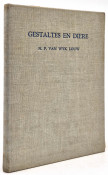(these books are located in the USA)
Facsimile reprints of the Sampson Low, London, 1886 First Edition: 2 volumes: bound by hand, with hand-marbled end papers. Sepia-toned color frontispiece portrait of Kerr tipped-in, as well as a large facsimile fold-out map; facsimile of original cloth front cover also tipped-into each volume. Since the volumes are hand-made they have imperfections, so expect such.
The original first editions are scarce and expensive, so this facsimile reprint is the next best thing.
---------------------
An account of Kerr's journey from Cape Town through the Transvaal, Matabeleland and Mashonaland to the south shore of Lake Nyassa and the Livingstonia Mission, which he found deserted.
"Fans of F.C. Selous know that Kerr was one of Selous' favorite hunting partners. Kerr is further credited by historians with being the first white man to actually traverse the central and equatorial lake regions of Africa. His book spurred many, including Selous, to hunt in these regions. A deservedly sought after title." (Herring)
‘Mr. Kerr remarks that he did not carry out “an expedition in the accepted meaning of that term,” observing, “My journey was under- taken alone ; I was unaided, and had no companionship of white men, neither had I a corps of regularly enlisted carriers.” He claims that, under these circumstances, the recital of his experiences “should present a very clear reflection of the natural life of some of the races in South- East Equatorial Africa,” as he travelled free from the “natural suspicion or prejudice” which generally prevails among the natives when “regularly organised bodies of men, total strangers to the communities they meet with,” pass through their country. He says, “I lived during a large stretch of my travels as the Kaffirs lived, mingling freely with them, and my opportunities ... for observing closely the modes and conditions of native life were unusually good.” Mr. Kerr was “the first white to traverse the great extent of territory stretching between Cape Colony and the Lake Regions of Central Africa,” and his account of Lobengula, his capital, harem, and the inhabitants of his country is vivid and picturesque, affording a capital description of the state of the country at this period, with interesting notes regarding the few white inhabitants then residing there.
In discussing the gold regions between Matabeleland and Tete, the author maintains that he has “been careful to speak of things just as he found them without colour and without gloom,” but he had not discovered anything of so certain a nature that he could “speak with hope and confidence of success in that direction.” The work is an important contribution to the history of exploration in South-East Equatorial Africa, and contains an excellent account of the physical features of these regions, and of their fauna, inhabitants, &c, and the volume contains a portrait of the author, a number of illustrations, and a route map.’ -- Mendelssohn, South African Bibliography
"Kerr traveled to the South African diamond fields to seek his fortune. He met Frederick Selous, the pair venturing into the interior of Matabeleland. In the river country leading to the Zambesi, he hunted elephant with his .500 Henry rifle which he fondly refers to as 'C.L.K' after his father's initials carved into the stock. There are instances of hunting lion near the Matua River, buffalo near Lake Nyassa, and more elephant on the Shiré River." -- Czech, An Annotated Bibliography of African Big Game Hunting Books 1785-1999
"Kerr traveled to the South African diamond fields to seek his fortune. He met Frederick Selous, the pair venturing into the interior of Matabeleland. In the river country leading to the Zambesi, he hunted elephant with his .500 Henry rifle which he fondly refers to as 'C.L.K' after his father's initials carved into the stock. There are instances of hunting lion near the Matua River, buffalo near Lake Nyassa, and more elephant on the Shiré River." -- Czech, An Annotated Bibliography of African Big Game Hunting Books 1785-1999
























